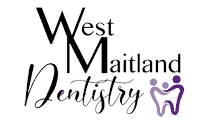Gum Disease: The Ugly Truth

The link between gum disease and other health issues has brought gum disease to the forefront. The association between this common disease and other systemic health issues makes it even more important to have your gingiva evaluated for any sort of inflammation and to treat it. There are two types of gum disease we will discuss, gingivitis and periodontal disease.
Gingivitis
Gingivitis is the early stage of gum disease. The term gingivitis means inflammation of the gums (gingiva). This gum disease occurs when a film of bacteria containing plaque settles on your tooth. This bacteria on your tooth will cause the gums to become red, inflamed and irritated. Swollen gums that bleed easily is a common first sign of gingivitis.
This disease can occur in patients that lack a good oral hygiene routine. More susceptible patients are those that do not brush and floss often enough or correctly. Those who skip out on regular cleanings with their dentists are susceptible as well.
At this stage, the gum disease is classified as non-destructive because it hasn’t traveled yet into the bone surrounding your teeth. When gingivitis is not treated it can progress into periodontal disease.
Periodontal Disease
Periodontitis occurs when the destruction of the gingiva, bone, and surrounding tissues occurs. This is much more serious since once destroyed it is not reversible.
When plaque accumulates on your mouth, it will calcify if not removed becoming calculus, commonly known as tartar. This tartar will build up both above and below the gingiva, making it difficult to clean off. Bacteria found in the calculus causes an inflammatory response which leads to the destruction of the tissue. Pockets form where the bone structure is lost. At this stage, a regular cleaning is not enough. Your dentist or hygienist will perform a scaling or deep cleaning to clean out the calculus from the pockets.
Symptoms include swollen gums that bleed easily when touched, sensitive teeth, build up visibly seen on teeth and bad breath. The bone destruction from periodontal disease can become so severe that teeth can become loose or even fall out.
Risks
Certain factors increase your chances of getting gum disease. These include:
- Smoking
- Inconsistent dental cleanings
- Poor oral hygiene, irregular flossing, and brushing
- Genetics
- Misaligned, crowded teeth
- Grinding or clenching your teeth
- Poor nutrition
- Fluctuating hormones for example during pregnancy
- Immunocompromised individuals
- Stress
- Medications
Prevention
Gum disease can be prevented by brushing twice a day, for two minutes, flossing at least once a day, using an antimicrobial mouth wash and seeing your dentist at least twice a year. Visit our blog on oral hygiene to get tips on how to prevent gingivitis and periodontal disease.
For the latest information and more resources about gum disease visit the American Academy of Periodontology website.
If you are worried about gum disease call our office for an exam to see what your options are. Also, don’t forget to make your cleaning appointment with Dr. D to prevent gum disease!



